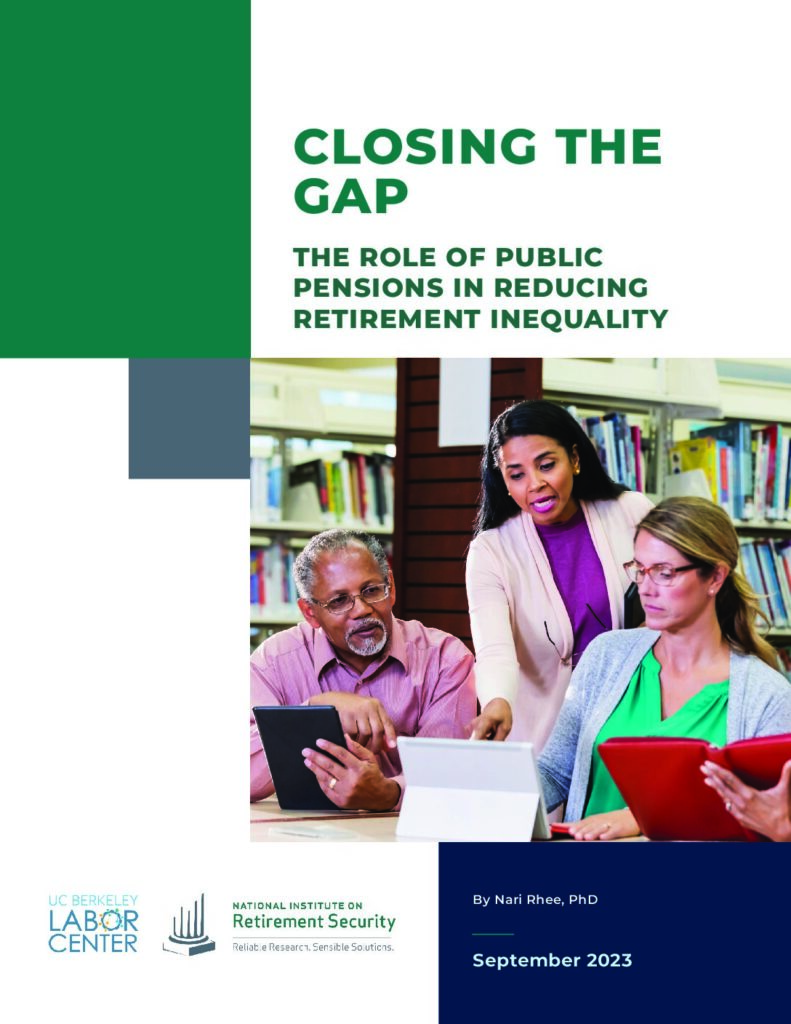March 12, 2024, is Equal Pay Day, and it's imperative to pay attention to the disparity in wage rates between men and women and the implications for retirement security.
Established by the National Committee on Pay Equity in 1996 as a public awareness event to illustrate the gap between men's and women's wages, the observance's founders selected a Tuesday in April as Equal Pay Day to represent how far women must work to catch up to the earnings of their male counterparts from the previous work week. However, the ramifications extend far beyond immediate financial concerns, especially in the realm of retirement planning, according to researchers with the National Institute on Retirement Security.
The gender pay gap exacerbates retirement insecurity for women, significantly impacting their long-term financial well-being. According to data from the National Women's Law Center, on average, women working full time, year-round, in the United States typically earn only 84 cents for every dollar men earn. This disparity is even more pronounced for women of color, according to the nonprofit that advocates for gender issues on behalf of women, girls, and the LGBTQ+ community.
According to retirement experts, this wage gap translates into reduced retirement savings for women when they leave the workforce. Women are more likely to take breaks from their careers to care for children, aging parents, or family members with disabilities. These career interruptions and lower wages result in lower contributions to retirement savings plans such as 401(k)s or IRAs. Consequently, women often retire with less accumulated wealth than their male counterparts, facing a greater risk of financial insecurity in their later years.
However, amidst these challenges, there is a beacon of hope in defined-benefit pension plans. Research from the National Institute on Retirement Security underscores the critical role of defined benefit pensions in providing adequate retirement income, particularly for older Americans, women, minority groups, and individuals without a four-year college degree.

The report, Closing the Gap: The Role of Public Pensions in Reducing Retirement Inequality, was released by NIRS and the UC Berkeley Labor Center in September 2023. It is authored by Dr.Nari Rhee, director of the Retirement Security Program at the Labor Center. It is supplemented by 51 fact sheets detailing the retirement equity impact of pensions in each U.S. state and the District of Columbia.
Defined benefit pension plans offer a reliable source of retirement income, typically based on a combination of years of service and final average salary. Unlike defined contribution plans, where the retirement income is subject to market fluctuations and individual investment decisions, defined benefit pensions provide a predictable and stable income stream throughout retirement.
The report finds that pensions reduce retiree poverty and near-poverty across race, sex, and educational attainment. And while pension income is distributed relatively evenly among recipients by race, public pension income is distributed more equally by gender than private pension and 401(k) income. Also, pension benefits currently in payment to 23.2 million adults aged 55 and older in the U.S. represent $5.6 trillion in household wealth, boosting middle-class family net worth by 36% and narrowing racial and gender wealth gaps among older families.
"As economic inequality has grown across the U.S., so too has retirement inequality," said Dan Doonan, NIRS executive director, in a news release on the Institute's website.
He says pensions are crucial in closing the financial gap and ensuring Americans, including women, can comfortably retire.
"Pensions not only reduce economic hardship among retirees, but they also serve as a buffer against growing inequality in U.S. retirement wealth," Doonan says.
According to the report, data indicate that 91% of retirees with pension income lived above 200% of the Federal Poverty Level from 2018 to 2020. The Federal Poverty Level, or FLP, is the income measure determining eligibility for certain welfare benefits.
On the other hand, according to the study, only 60% of retirees without pension income lived above 200% of the FLP. Moreover, retired Black women, Latino men, and Black men were twice as likely to have incomes above 200% of the FPL if they had a pension. The percentage of retirees above this basic income threshold was 63% for retirees with pension income. Without a pension, the study finds that those without a college education were 73% more likely to be above 200% FPL.
"Pensions, including public pensions, are vital assets for workers, families, and communities, especially those that have been historically shut out of wealth-building opportunities," says the study's author, Dr. Rhee. "Given the decline of pensions in the private sector, public pensions form a critical bulwark of middle-class retirement security alongside Social Security."
According to NIRS, the national analysis of the impact of pensions on retirement security in this report relies primarily on the 2019, 2020, and 2021 Survey of Income and Program Participation. This report analyzes public sector employment demographics using the Current Population Survey/Annual Social and Economic Supplement (CPS ASEC), a joint survey of the Census Bureau and the U.S. Bureau of Labor Statistics. The state fact sheets associated with this study rely exclusively on CPS ASEC, which has data on pension income but not assets.
Zeroing in on Texas, in 2018-202, Black and Latino workers in the Lone Star State were respectively 84% and 129% more likely to be in a retirement plan if they worked in the public sector, compared to the private sector, according to a Texas Fact Sheet supplied as part of the NIRS and UC Berkeley Labor Center study. In Texas, public sector plans cover 30% of Black retirement plan participants, whereas 19% of Black workers work in government.
In 2013-2021, Black and Latino retirees in Texas were respectively 136% and 121% more likely to be above 200% of the Federal Poverty Level (or $26,000 per year for a single adult) if they had pension income. According to the study, retirement women in the Lone Star State were 82% more likely to be above 200% FPL if they had pension income.
The study finds that the average wealth value of pension benefits for Black pensioners in Texas was $282,000 in 2013-2021, roughly 90% of the average of $320,000 for white pensioners.


